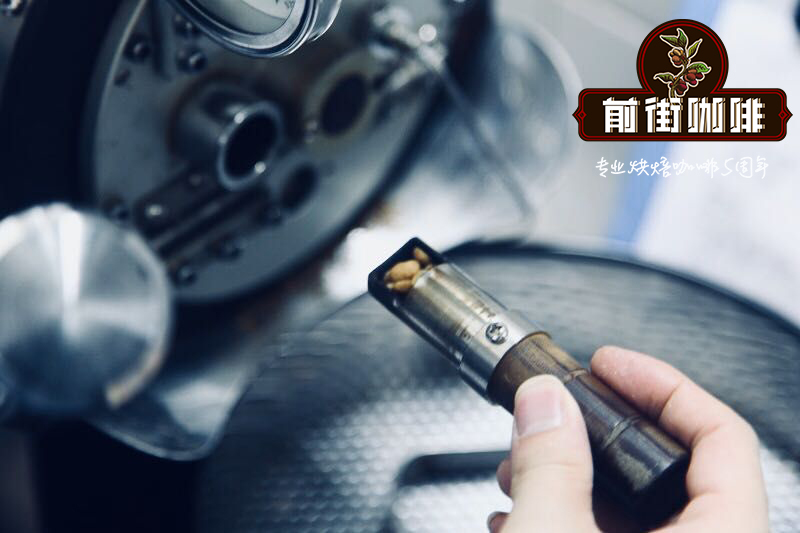How to understand the coffee bean grade system of flavor and taste in each major coffee bean producing area
What's coffee talking about?
The brewing of a cup of coffee begins with choosing beans. The flavor and texture of the raw material itself has determined the vocabulary you can tell. There is only one way to choose beans and understand what each coffee bean is talking about, and that is to increase the personal experience of drinking coffee. For example, try coffee from different producing areas in a cafe, or broaden your horizons by experiencing different interpretations of the same bean in multiple cafes.
But we can still try to draw a little longitude and latitude in our mind through reading, through the characteristics of the place of origin and the degree of baking, so as to avoid getting lost in the vast sea of coffee, but remember to keep an open mind and face every bean in front of us.

Coffee bean producing area
Africa: African beans are represented by Ethiopia. Washed Yegashev is often floral and citrus-lemon mellow, light and elegant, while sun-treated ones are full-bodied with rich berries or rich fruit notes. Another representative country is Kenya. Typical Kenya not only has the taste of black plum, but its solid and heavy taste is also unique among African beans.
Central and South America: central and South America is usually famous for its mild, balanced flavor. Often with the flavor of nuts and caramel as the main performance. It used to be famous for Brazil and Colombia. In recent years, Geisha coffee from Panama has attracted a lot of attention because of its strong nectar and citrus flavor.
Asia: the representative of Asia is Sumatra of Indonesia, which we often hear of as Mantenin. Low acidity, excellent mellow and thick feeling, coupled with the unique flavor of sunwood and herbs, can be called the oriental flavor of coffee.
Coffee bean grade
Graded according to the size of coffee beans
Grade E coffee beans
Elephant bean, is a variety of beans, the largest, but can not be found.
AA grade coffee beans (such as the common Kenya AA)
At least 7.1 mm, or 90% of coffee beans have more than 18 mesh. If the AA+ is larger on average, the AA++ is bigger.
Other graded proper nouns
A, AF: at least 90% 17 mesh, AF is unique to Tanzania, and some countries use A.
AB:6.8 mm and sizes above 6. 2 mm are mixed together.
90% of BBR beans are more than 15cm 6 mesh.
PB (Peaberry, also known as small round beans): is a rare bean, coffee cherry in pairs of beans only grow into small round beans. The size is between 3.2~5.4mm (11mm 14 mesh). Some people will like beans of this size, so they are specially singled out.
C, smaller beans (14 orders), but not small round beans.
Other T, TT, X, Y and so on are small or defective beans, which should not be easy to buy in Taiwan.
Colombia is also graded by size, but the levels used are not so complicated, namely Supremo (equivalent AA or above), Excelso (equivalent B and C), and Extra (smaller).
Although coffee beans are not necessarily delicious when they are big, it is important for a bean baker to have a uniform size. The bigger the beans are, the harder it is to bake them on the innermost side. But if you bake well, the flavor will be more layered.
Grade coffee beans according to altitude
The reason for this is that coffee trees at high altitudes grow more slowly, and coffee beans are usually harder. So higher and harder coffee beans are considered to be better coffee beans. Costa Rica, Honduras, El Salvador, Ecuador and many Central and South American countries use this classification. But the height benchmark of each country will be slightly different, although everyone's mountain is not the same high, but they all want their country to have the highest-grade SHB.
SHB, SHG very hard beans Coffee beans
Extremely hard beans, originally Strictly Hard Bean or Strictly High Grown. Some countries order coffee beans above 1600 meters or 1700 meters above sea level, but Ecuador thinks that beans above 1300 meters are extremely hard beans.
FHB (Fancy Hard Bean), excellent hard beans, coffee beans above 1500 or 1600 meters above sea level, but not every country has this level, and some will jump directly to the HB level.
HB (Hard Bean) hard beans coffee beans
Hard beans usually refer to beans of 1200 meters or more than 1400 meters.
SH (Semi Hard Bean), semi-hard beans 1100 or 1200 meters or more.
HG (High Grown), some countries jump directly from SHG to HG, referring to coffee beans between 1000 and 1500 meters. In El Salvador, HG refers to coffee beans between 900 and 1200 meters.
Most of the other grades refer to coffee beans below 1000 meters above sea level, which are not easily accessible to readers.
Classification by the occurrence rate of defective beans
Another way of grading is to take out 300 grams of coffee beans and see how many defective beans there are. The fewer the beans, the better. The same level varies slightly from country to country, but not by much. Ethiopia and Indonesia are classified in this way.
The grading of Ethiopian coffee beans
Z, no defective beans at all, super rare.
G1, less than 3 defective beans, the grade of most fine coffee beans.
G2jue 412 defective beans.
G3J 13,25 defective beans.
G4jue 26045 defective beans.
G5Magol 460.90 defective beans.
Indonesian coffee beans are graded (e. G. Manning coffee)
G1, less than 11 defective beans.
G2J 1225 defective beans.
G3MAL 26044 defective beans.
G4a. 45. 60 defective beans.
G4bBJ 61m 80 defective beans.
G5J 81m 150 defective beans.
Grade coffee beans by cup test
The cup test referred to here is not the cup test of the kind of premium coffee, but a rough way of grading. For example, Brazil divides coffee beans into six grades: FC (Fine Cup), Fine, Good Cup, Fair Cup, Poor Cup, and Bad Cup.
And five grades of versions: Strictly Soft, Soft, Softish, Hardish, Rioy
So Brazilian coffee beans will be written like SS FC, super-smooth good coffee.
Important Notice :
前街咖啡 FrontStreet Coffee has moved to new addredd:
FrontStreet Coffee Address: 315,Donghua East Road,GuangZhou
Tel:020 38364473
- Prev

What are the differences between Arabica and Robusta?
Coffee is an evergreen shrub native to Ethiopia in East Africa. The main tree species can be divided into three original species: Arabica, Robusta and Liberia. At present, the most important coffee beans in the world trade mainly come from two original species: Arabica and Robusta. This coffee bean cultivation method, growth environment, shape and other conditions and characteristics have
- Next

Is coffee okay for dogs? What if I accidentally drink it? Symptoms of pet caffeine poisoning
Why coffee is harmful to dogs Dogs usually live indoors with their families. When people eat rice, they may beg for a lovely face. As a result, they tend to feed human food, but feeding human food can hurt dogs. One of them is coffee, which is very effective for humans, but because coffee contains caffeine, excessive intake of dogs may lead to coffee.
Related
- Beginners will see the "Coffee pull flower" guide!
- What is the difference between ice blog purified milk and ordinary milk coffee?
- Why is the Philippines the largest producer of crops in Liberia?
- For coffee extraction, should the fine powder be retained?
- How does extracted espresso fill pressed powder? How much strength does it take to press the powder?
- How to make jasmine cold extract coffee? Is the jasmine + latte good?
- Will this little toy really make the coffee taste better? How does Lily Drip affect coffee extraction?
- Will the action of slapping the filter cup also affect coffee extraction?
- What's the difference between powder-to-water ratio and powder-to-liquid ratio?
- What is the Ethiopian local species? What does it have to do with Heirloom native species?

